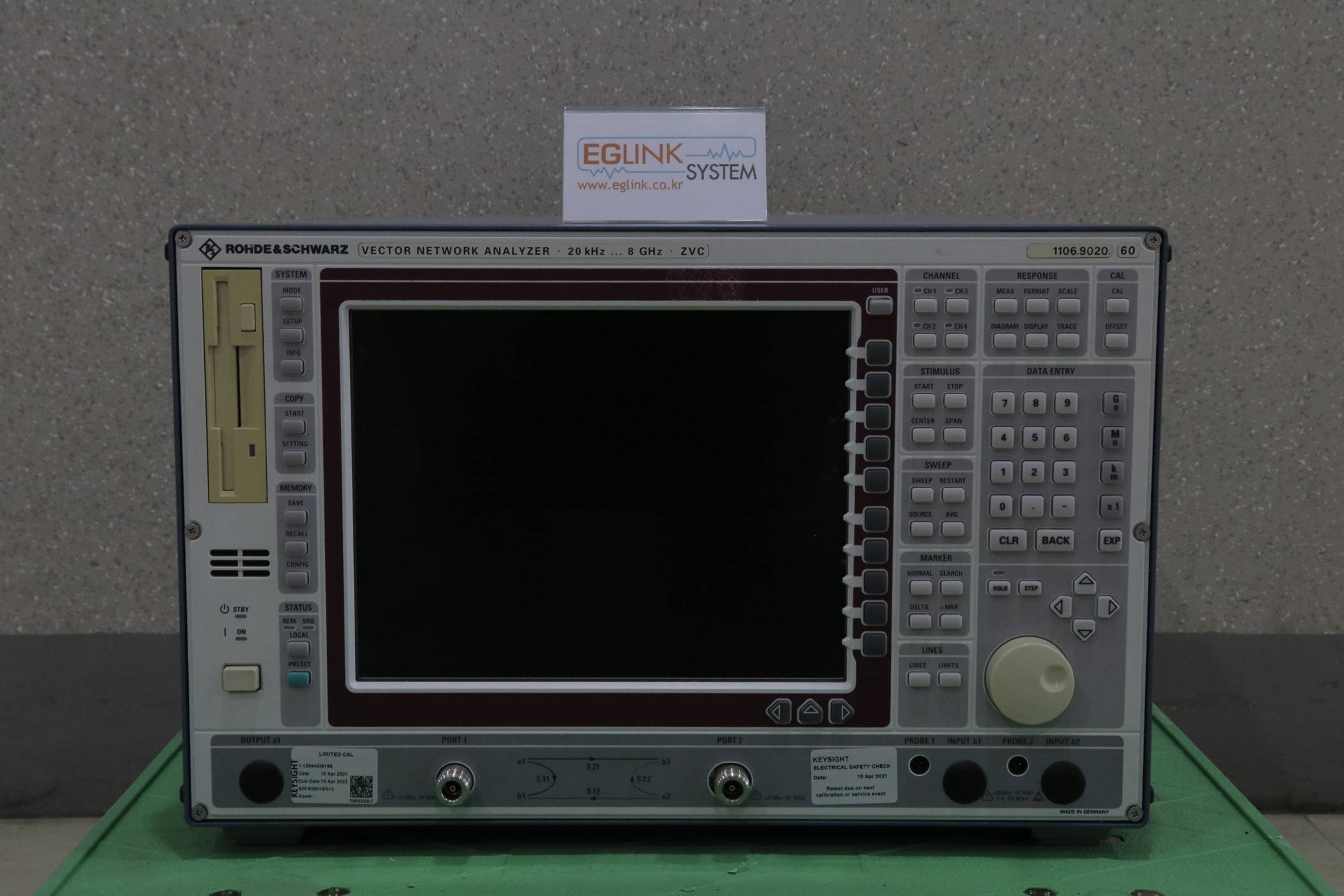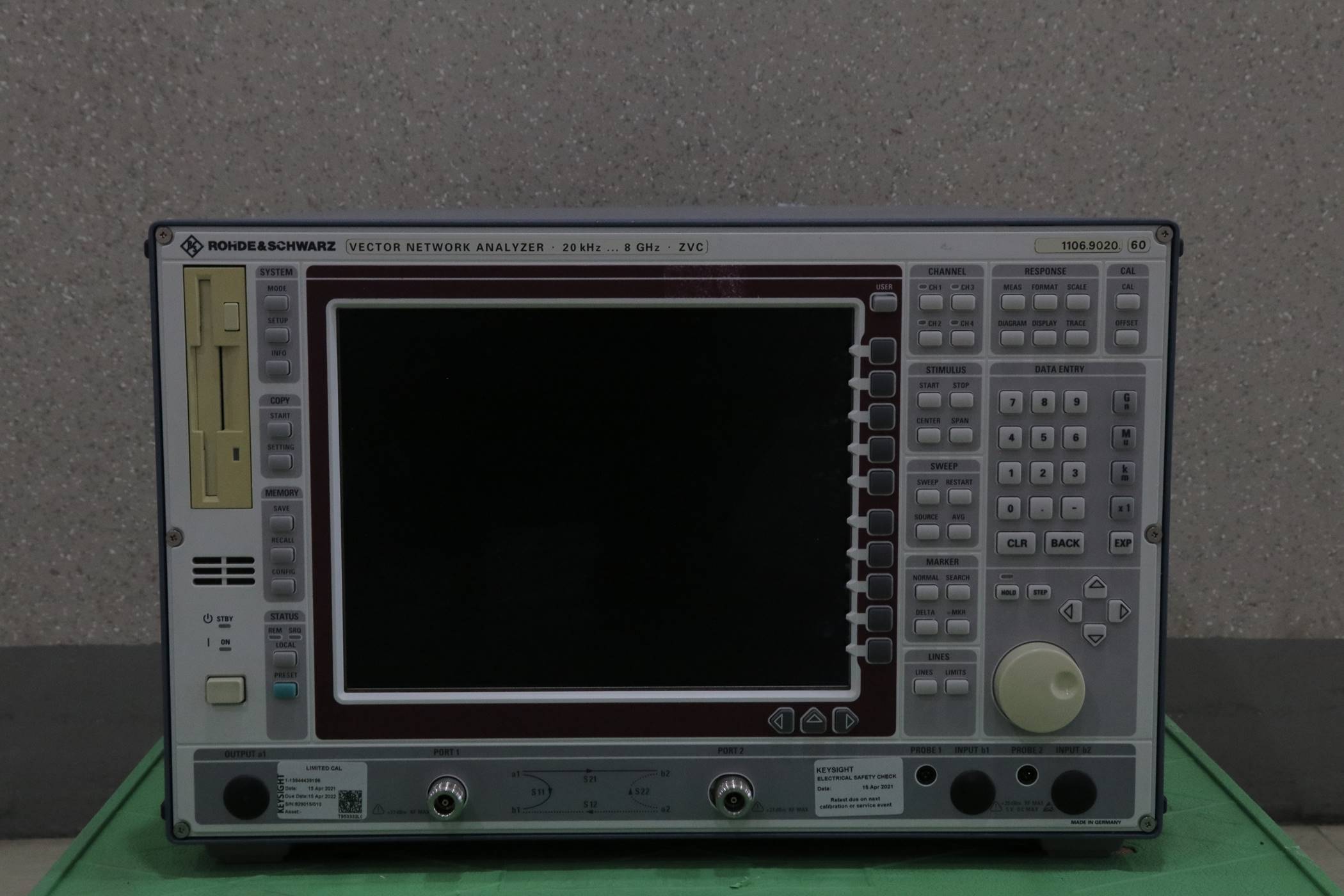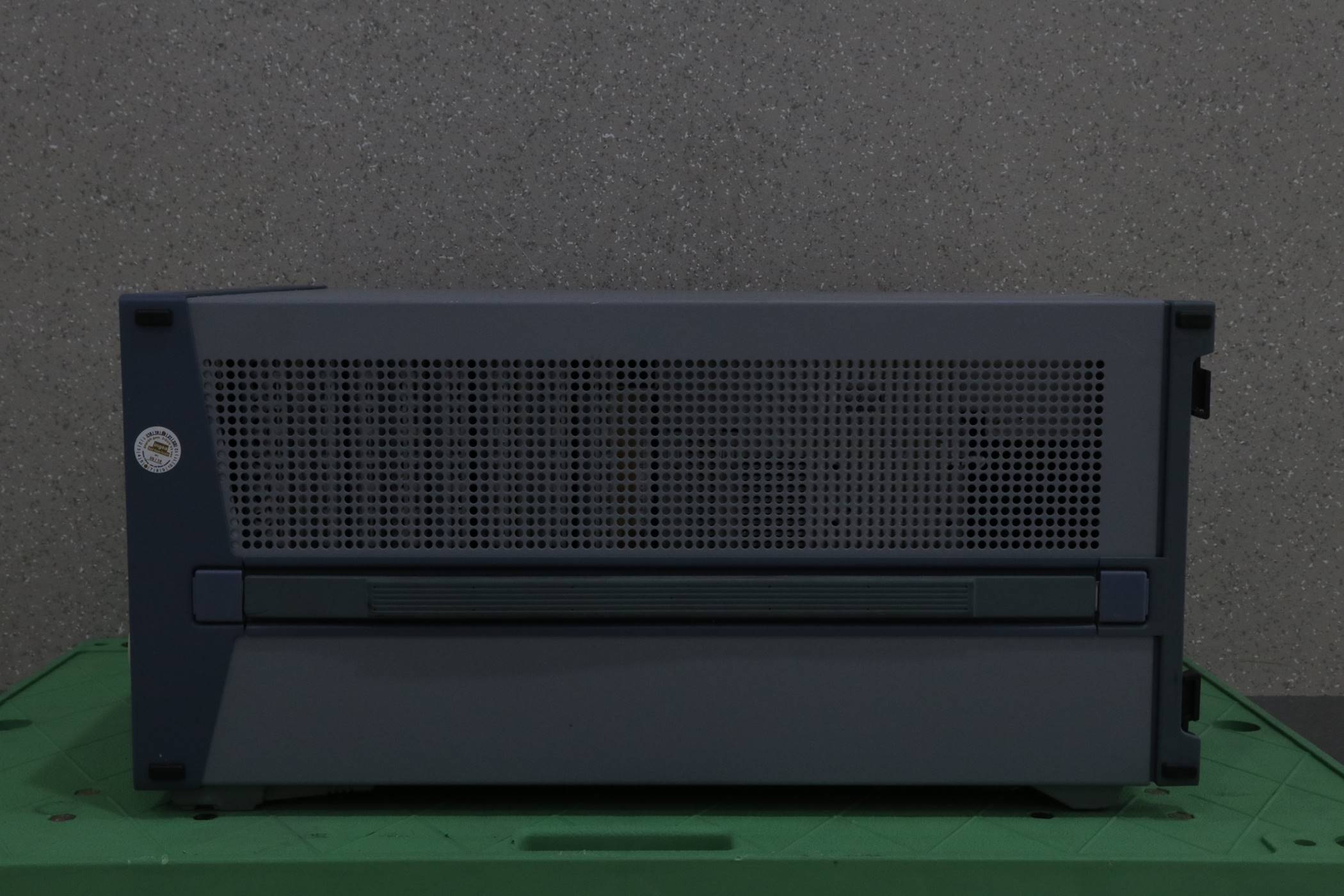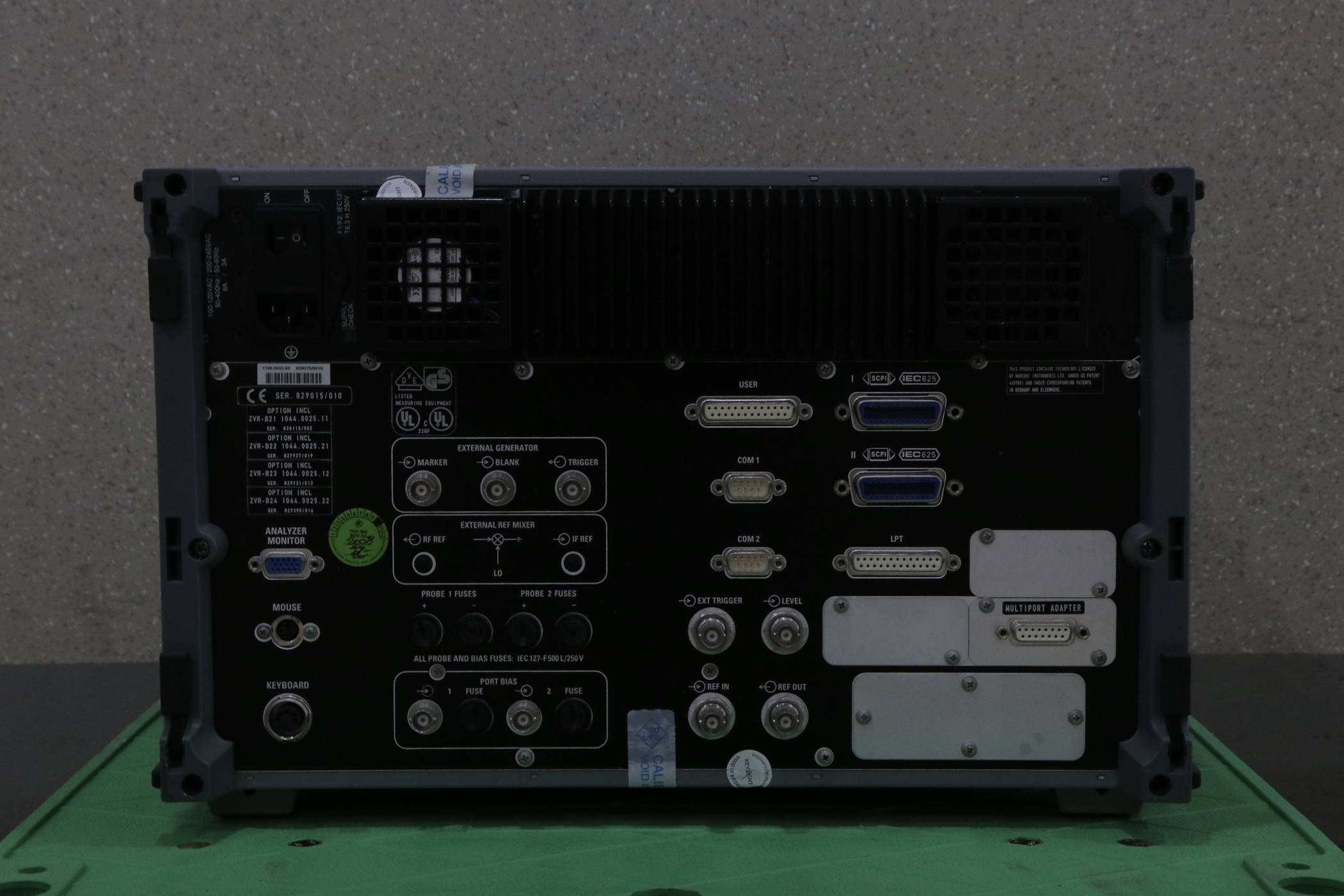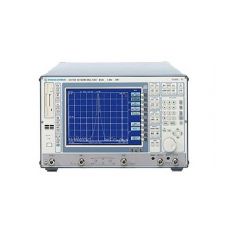
ZVC Rohde & Schwarz Network Analyzer
Frequency Range: 20 kHz-8 GHz
High measurement speed: <125 μs/point
Fast IEC/IEEE bus: <15 ms
High frequency resolution: 10 μHz
Short calibration times: <20 s
Large display: active 26 cm color LCD
REQUEST A QUOTE
ZVC Rohde & Schwarz Network Analyzer
B21: Generator Step Attenuator PORT1 /
B22: Generator Step Attenuator PORT2 /
B23: Receiver Step Attenuator PORT1 /
B24: Receiver Step Attenuator PORT2 /
B4 /
B5: Nonlinear Measurements /
ZVC Rohde & Schwarz Network Analyzer
B21: Generator Step Attenuator PORT1 /
B22: Generator Step Attenuator PORT2 /
B23: Receiver Step Attenuator PORT1 /
B24: Receiver Step Attenuator PORT2 /
B25: External Measurements /
B2 /
B4 /
B5: Nonlinear Measurements /
B6: Reference Channel Ports /
B7: Power Calibration /
B10: Increased Output Power for Port1 or Output a 1 /
B16 /
Detail
Additional Features:
Excellent dynamic range
Low inherent noise
Broad frequency range for universal use
High Measurement Speed
Fast data transfer via IEC/IEEE bus
Customized models for special applications
Manual calibration techniques: TOM, TRM, TRL, TNA, TOSM, TOM-X
Automatic calibration: AutoKal
Compatibility with PC, CAE: Internal PC with Windows NT operating system suitable for PC applications
With a bidirectional analyzer all four S-parameters of the DUT can be determined without changing connections
The 4-channel analyzer provides the calibration methods TOM, TRM, TRL, TNA and TOM-X
Specifications
Frequency Range: 20 kHz-8 GHz
High measurement speed: <125 μs/point
Fast IEC/IEEE bus: <15 ms
High frequency resolution: 10 μHz
Short calibration times: <20 s
Large display: active 26 cm color LCD
Integral Test Set: S-Parameter
Source Frequency Resolution: 0.00001 Hz
Maximum Output Power: 1 mW
Power Resolution: 0.1 dB
Output Impedance: 50 Ohm
No. of Receiver Channels: 4
Dynamic Range: 60 dB-120dB
Displayed Average Noise: -100 dBm to -75 dBm
Maximum Input Decibel: 0 dBm
Programmability/Connectivity of the ZVC
User Interface: Proprietary
Ports to Peripheral Devices: IEEE488, RS232C
Programming Language: SCPI
The Rohde & Schwarz ZVC network analyzer is an instrument which measures the complex transmission and reflection characteristics of two-port devices in the frequency domain. It does this by sampling the incident signal, separating the transmitted and reflected waves, and then performing ratios that are directly related to the reflection and transmission coefficients of the two-port. Frequency is swept to rapidly obtain amplitude and phase information over a band of frequencies of interest.
Rohde & Schwarz ZVC network analyzers utilize synthesized-frequency sources to provide a known test stimulus that can sweep across a range of frequencies or power levels. Rohde & Schwarz ZVC network analyzers also can perform ratioed measurements (including phase), which require multiple receivers. The Rohde & Schwarz ZVC can provide a wealth of knowledge about a device under test (DUT), including its magnitude, phase, and group-delay response.
The family comprises the five Vector Network Analyzers ZVRL, ZVRE and ZVR as well as ZVCE and ZVC which extend the frequency range to 8 GHz. All models are compact instruments with integrated generator, test set and receiver, each tailored to a different field of application. All analyzers can be subsequently upgraded to the higher-class models ZVR and ZVC comprise a test set with two SWR bridges (ZVR) or directional couplers (ZVC), an RF switch, two measurement channels and - unlike ZVRE and ZVCE - two reference channels. With this configuration a variety of novel calibration procedures, e.g. TNA, can be performed, which considerably improve the accuracy particularly in non-coaxial applications. ZVR and ZVC are the allrounders of the family and suitable for applications in R&D and production no matter how sophisticated.
Fast IEC/IEEE bus
Reading out a single marker value via the IEC/IEEE bus takes only 5 ms, reading out complete trace data (200 values) less than 15 ms, which considerably speeds up complex, computer-controlled measurements.
Short calibration times
With the Rohde & Schwarz calibration method AutoKal, a simple through connection of the test ports is sufficient to perform automatic full two-port calibration. This calibration takes just a few seconds (including computation of correction values) and cuts time and operating errors to a minimum.
Speed >>25 sweeps/s
The extremely low-noise and fast synthesizer in conjunction with an exceptionally large measurement bandwidth of up to 26 kHz allows real - time result display. The ZVx measures not in two subsequent sweeps but at every frequency point in forward and backward direction and thus all four S-parameters - including system error correction. This ensures real-time display of fully corrected data even during alignments with reduced sweep speeds. The dynamic range of ZVx is more than 95 dB even at a high measurement rate of 25 sweeps/s and 10 kHz measurement bandwidth.
Dynamic range >130 dB
The high stopband and low passband attenuation of modern RF components place new demands on network analyzers. Thanks to fundamental mixing, the useful dynamic range of Rohde & Schwarz network analyzers is more than 25 dB better than with conventional sampling techniques. Because of the low-noise front end, Rohde & Schwarz network analyzers attain a dynamic range of >130 dB, so transmission measurements on DUTs with extremely high stopband attenuation can be performed with high accuracy, even at low input levels.
Power calibration: testing active DUTs
Power calibration performed in the factory enables constant output power and high accuracy in the measurement of absolute input level over the full frequency range. This is particularly important for frequency-converting measurements and non-linear measurements on active components. Furthermore, frequency-dependent level variations of an external test setup can be measured and compensated with the aid of the Power Calibration option.
Simultaneous display of four traces on the 26 cm color LCD
The ZVx models are the first network analyzers in this price class to simultaneously display up to four measurement traces with independent parameters (measured quantity, frequency range, bandwidth, etc.). The large, active color LCD with high refresh rate allows precise alignments without operator fatigue.
Internal PC
The network analyzers are equipped with a PC board including interfaces for keyboard, mouse, printer, external monitor and Windows NT as the operating system. In the PC mode, the internal hard disk can be accessed and PC programs executed on the ZVR. This function considerably simplifies operation, processing and result recording. The optional Ethernet link, the integration of any printer driver and the execution of IEC/IEEE bus control programs on ZVR considerably extend the application range and performance. Complete setups, traces, numerical results, limit lines, calibration data, macros and screenshots can be stored on the hard disk or on floppy disks. The available formats (e.g. WMF, ASCII, Serenade....) allow problem-free import to Windows programs. The data can be processed in the ZVR with the aid of the internal PC.
Automatic test systems
Fast recording and processing of measured data and, in addition, an SCPI-conformal IEC/IEEE bus command set make all models of the ZVR family ideal for use in automatic measurement systems. All models are equipped with two IEC/IEEE bus interfaces as standard. One is used for analyzer control via an external PC, the other for controlling external devices, e.g. signal sources for intermodulation or mixer measurements, from the ZVR. Another optional IEC/IEEE bus interface is provided for the internal PC. Via this interface, IEC/IEEE control programs can be executed on the internal PC, thus enabling the ZVR to control itself or complete test systems. The Ethernet option allows data exchange and control via LAN.
Efficient calibration techniques
The classic 12-term calibration method requires four calibration standards: Through, Open, Short and Match. The name TOSM given to this method is an abbreviation of the standards' names. A number of other modern calibration methods (TOM, TRM, TRL, TNA) are also provided in ZVR and ZVC. Unlike TOSM (12-term) they require only three different standards. Additionally, lines (L), reflecting one-ports with unknown reflection coefficient (R), matched attenuators (A) and two-port networks (N) with symmetrical reflection can be used. Due to its simplicity, TOM is the method recommended for general applications. For calibration at frequencies up to 100 MHz it is not even necessary to connect an open circuit, and the ports may simply be left open. Thus, a complete two-port calibration can be performed with only two calibration standards. TOM allows also implicit verification so that errors caused by defective calibration kits or operating errors are excluded. This considerably enhances reliability in the laboratory and particularly in production.
With on-wafer measurements, measurements on PCBs or in fixtures it is difficult to design or specify suitable calibration standards at justifiable effort. This problem can be solved with the TNA and TRM calibration methods developed and patented by Rohde& Schwarz. With these methods the characteristics of the calibration standards need not be fully known. With TNA, for instance, a full two-port calibration can be performed with two standards: if reflection symmetry is provided at the reference planes, the calibration step with network (N) does not require a standard to be connected, the test ports can just be let open. Just a through (T) with known length and a matched attenuator (A) are required.
The calibration effort is reduced to a minimum when the AutoKal option is used that requires only one simple through-connection.
Option
| Option |
Description |
| B10 |
Increased Output Power for Port1 or Output a 1 |
| B16 |
|
| B17 |
Second IEC BUS Interface |
| B2 |
|
| B21 |
Generator Step Attenuator PORT1 |
| B22 |
Generator Step Attenuator PORT2 |
| B23 |
Receiver Step Attenuator PORT1 |
| B24 |
Receiver Step Attenuator PORT2 |
| B25 |
External Measurements |
| B4 |
|
| B5 |
Nonlinear Measurements |
| B6 |
Reference Channel Ports |
| B7 |
Power Calibration |
Download
Video

